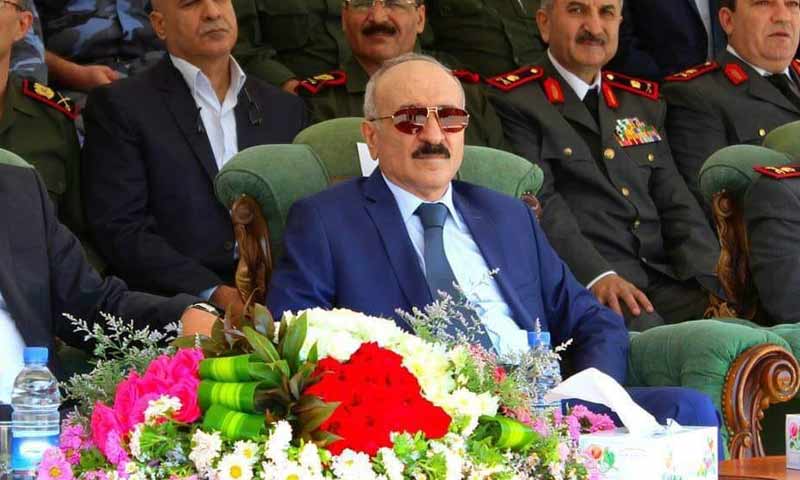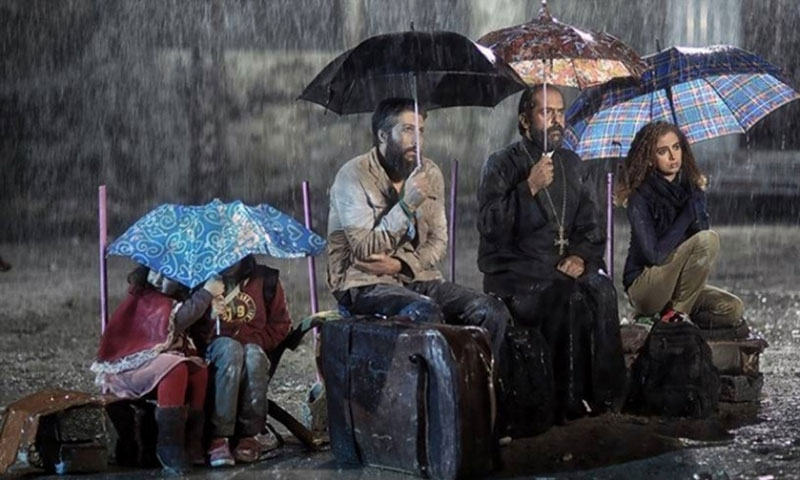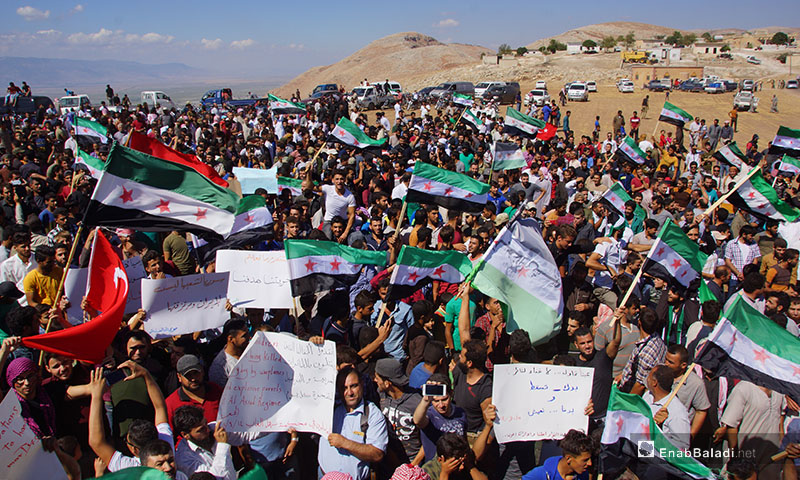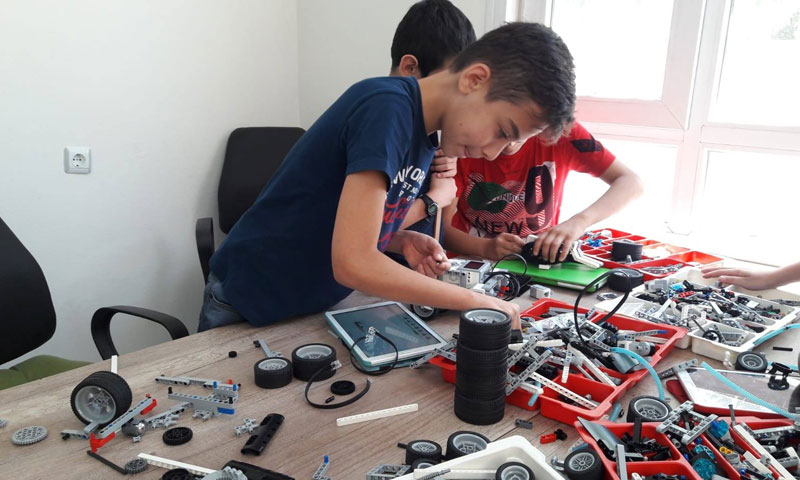32nd Anniversary of Hama Massacre .. Facts and testimonies about one of the most brutal contemporary massacres
Enab Baladi Issue # 102– Sun, Feb. 2, 2014
 A bitter episode of the struggle that the city of Hama had to suffer for half a century began when Hafiz Al-Assad was the secretary of defence in 1964. The beginning of these tragic events was marked by the destruction of the ‘Sultan’ Mosque, under orders from the late Hafiz Al-Assad himself.
A bitter episode of the struggle that the city of Hama had to suffer for half a century began when Hafiz Al-Assad was the secretary of defence in 1964. The beginning of these tragic events was marked by the destruction of the ‘Sultan’ Mosque, under orders from the late Hafiz Al-Assad himself.
The events continued to unfold until Hafiz al-Assad came to power in 1970, and from that date until February 1982, Hama had been a platform for peaceful resistance activity, which Assad had tried to eliminate, thus resulting in the massacre of ‘Bustaan alsaadah’ in August 1980, which left only a few widows in the area. Then on February 2nd 1982, the so called tragedy of the century began, of which Hama was the central stage of events.
“Tragedy of the Century”
The “tragedy of the century” was the biggest military operation the Syrian regime had carried out against the city of Hama, with the excuse of exterminating the ‘Muslim Brotherhood’, killing as a result, tens of thousands of the inhabitants of that city over a period of 27 days, during which the city was besieged, then shelled, before it was occupied by the military, who began carrying out massacres.
The events of the massacre
The events in the first day of the massacre took place in 3 stages; the first stage began at midnight, when government forces raided the houses and hiding places of the rebels, failing to capture any of them. The second stage began with the decision of the fighter rebels from the city of Hama to defend themselves and their families following the intensification of the regime’s military aggression. The third stage began early in the morning when the government sent reinforcements of large units of Special Forces and armed Baath party loyalist gangs, as well as the defence Brigade via Hama’s military airport. At the same time the 47th and 21st Tanks Brigade headed towards the city.
The difference between that and today’s events is the ability of the rebels this time to resist the attempt by Assad’s men of storming the city, from many different points. At the time Assad’s forces lost many men as well as artillery, which resulted in sending reinforcements to the four main points in the city, killing any man they saw and raping any woman or girl they came across, as well as pillaging anything valuable. This is not to mention the personal retaliation by the loyalist gangs against families of the ‘tali’ah’ rebels, who had taken part in the fighting.
The city witnessed twenty seven days of horror and intense suffering they had never experienced before. The worst of these days being the day Rifaat Al-Assad patrolled the city streets. This being after Marshall Law was called off, and the inhabitants were allowed out of their houses. It was a Friday and naturally the men went out to the mosques to perform their religious duty. Infuriated by the sight of these men, Rifaat made his notorious comment, that the people of Hama recall to this day, “There are still men in Hama?!!” He at once ordered his soldiers to round up all the men. They led them to a graveyard known as the ‘Khadraa’ cemetery, also known as ‘Sreheen’ cemetery where they were all executed. There were about 5000 men according to local witnesses.
From that time until now there has been a consistent policy of destroying mosques by the Assad regime that needs to be pointed out. It has been used deliberately to heighten sectarian conflict first by Assad the father and continuing today by his son, in their war against the Syrian people. Eighty eight mosques were destroyed either completely or partially by the regime. It did not stop there; one of the city’s churches was shelled, which resulted in a large part of it being demolished, thus confirming the regime’s intention to destroy the entire city.
Witnesses from the inhabitants of Hama:
Mr Attaf Tarkawi, better known amongst the revolutionary circles as Sheikh Salih Al-Hamwi, a member of the General Committee of the Syrian Revolution, and a military leader of the ‘sons of Hama’ brigade, gave an account of the massacre in Hama to EnabBaladi, confirming the horrific episode that took place. “It was a very harsh time in 1982. There was nothing anyone could do but stay at home and wait for their death. For the first time in my life I saw people herded like sheep and taken to the slaughter in complete submission. They came into our area and rounded all the men there, sending some to the 47th Brigade, while the rest were summarily executed. That was one of the most horrifying sights; to see all these bodies on top of each other swimming in their blood. ”Sheikh Salih added, describing the human and material losses that the city suffered, “A quarter of the city’s inhabitants were dead or missing. Not a single house remained unaffected by this great calamity. In some areas there was total carnage. A great number of women had been raped or dishonoured. This continued after the massacre, when the widows of the martyrs were told to come forward and claim compensation for the loss of their husbands – killed by the regime- in order to feed their orphans”. In Sheikh Salih’s opinion, the worst outcome of the massacre was ‘the combination of humiliation and killing’.
Ameed Alwany, known by the revolutionaries as Imran Taj-Uddin, one of the founders of the group ‘Ahrar Hama’, the Free People of Hama, and one of the revolutionary co-ordinators in the city, came forward with his eye witness account to EnabBaladi, saying ‘The losses were great and well known, but the worst loss was that of a whole generation of educated and productive men and women, on the basis of hatred, while banishing thousands of the best intellects, and detaining those that remained. The city was destroyed as it became deprived of its greatest intellects, leaving behind nothing but fear of repression, and fear of even thinking about freedom, which that generation persevered in teaching the next generation, hence leaving it paralysed and unable to shake off this humiliation.’ Mr Alwany added that the’ new generation has benefitted from the pains of the past, that were transmitted to it, and combined these pains with the hope it carried, and this brought about the Hama Revolution’. Alwany states ‘We know for sure that those that were not moved by 1982 will not be moved by today’s revolution, therefore we have no hope in them and they are of no use to us.’
Ameed continues to retell the events which he witnessed in 1982. ‘One of the worst occasions was when they wanted to enter the houses. The women were terrified. I remember my mother went and covered her face in soot and locked herself in a room, trying to make out she was mad, in the hope the soldiers would leave her alone. Many of the women in the family wore many layers of clothing, to try and protect themselves from Assad’s savages. You couldn’t imagine the relief after the soldiers had left, despite having ransacked the house of all its valuables and gold.
An estimation of the numbers killed
According to the American journalist Thomas Freidman, Rifaat Al-Assad boasted that he had killed 38 thousand people in the city of Hama alone. Meanwhile the statistics of the Syrian Committee for Human Rights indicate that the number of those killed was between 30-40 thousand, the vast majority of them civilians, most having been shot dead in mass executions then buried in mass graves.
Investigations into the massacre
Instead of investigating the war crimes carried out by regime forces against the civilian population in Hama, and alleviating the suffering of those who remained, the government actually rewarded those soldiers believed to have been involved, or were directly responsible such as Rifaat Al-Assad. He was appointed as vice president of the Republic for National Security. In addition many generals and army officers were promoted to higher ranks, while the mayor of Hama at the time, Mohammed Harbeh, was appointed Interior Minister. This was little more than complete indifference on behalf of the regime to public opinion and feelings, making it clear that it intended to continue with the use of force, instead of dialogue, in dealing with its internal problems. This proves that the International community turned a blind eye to the massacre, in order to reinstate Assad’s rule in the country.
if you think the article contain wrong information or you have additional details Send Correction
-
Follow us :

















 A
A
A
A
A
A






 More Translated Articles
More Translated Articles